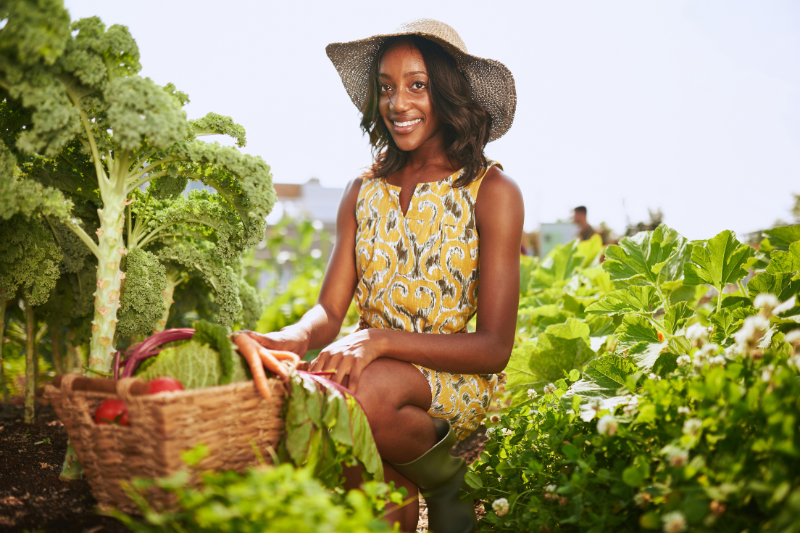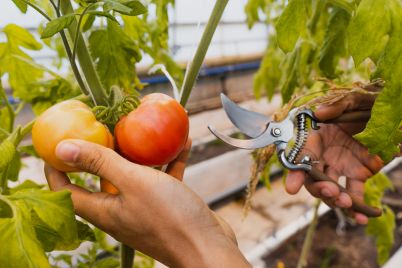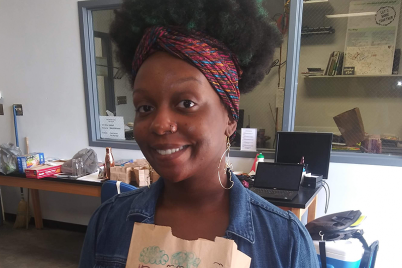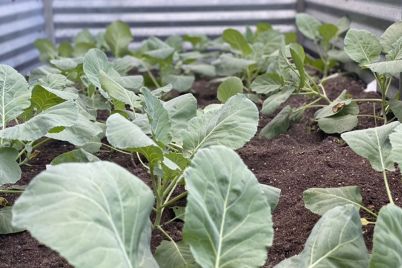Most vegetables can be grown in Pinellas County, but they are season-specific because of climate. Fall and winter are the best seasons for beginners to start a vegetable garden in Pinellas County.
Organic Gardening for Beginners
Sun, water, and soil are basic elements for growing vegetables, but how does climate fit into the formula? The United States Department of Agriculture has ranked the entire country for planting zones based on climate. Pinellas County is ranked in zone 10a; a mild temperature zone allowing vegetables to grow all year.
Temperature is only part of the climate story; wind, humidity, and rainfall must be considered, too. Constant wind can dry out soil and increase transpiration (moisture evaporation from leaves). Humidity supports the growth of plant-destroying fungus like powdery mildew, and then wind blows fungus spores from affected plants to healthy plants. Rainfall is sporadic during two-thirds of our year and can be torrential during the rest of the year.
Climate has a big impact on what we grow and when we can grow it.
The University of Florida Food and Agriculture Institute (IFAS) publishes an online calendar of monthly gardening activities. The chart below was compiled from the IFAS website and illustrates planting schedules for a few commonly grown vegetables. (Note: this is a planting schedule and not a growing schedule. Some of these plants will continue to grow in our summer but cannot be started then.)
Though not included in this chart, sweet potatoes and field peas (e.g. black-eyed peas and crowder peas) and many tropical vegetables can be planted during our summer.
| Vegetable/Herb | Jan | Feb | Mar | Apr | May | Jun | Jul | Aug | Sep | Oct | Nov | Dec |
| Carrots | x | x | x | x | x | x | ||||||
| Collards | x | x | x | x | x | x | x | x | ||||
| Cucumbers | x | x | x | |||||||||
| Green beans | x | x | x | x | ||||||||
| Lettuce | x | x | x | x | ||||||||
| Okra | x | x | x | x | x | x | ||||||
| Squash | x | x | x | x | ||||||||
| Tomatoes | x | x | x | x |
- Carrots grow very well in loose, sandy soil but may be affected by root-knot nematodes (RKN), microscopic worms pervasive in our sandy soil. RKN destroys roots, making nutrients and water uptake nearly impossible. Since carrots are roots, they are best planted in cooler weather when RKN are less active.
- Collards can grow all year long, even in the heat of the summer, but they need to be mature plants to survive summer conditions. Insects like white fly and aphids typically weaken collards, but bacterial rot in the stalk and stem nodes will kill this plant. Drip watering instead of overhead sprinklers will help prevent rot.
- Cucumbers are best started early and sown every few weeks to cope with loss due to powdery mildew, caterpillars, borers, and a variety of other pests. RKN is also a problem for cucumbers, so try growing them in containers.
- Green beans (bush or pole) grow well with warm days and mild nights. They are also susceptible to powdery mildew and to RKN. Select varieties that are more resistant to diseases. Drip watering instead of overhead sprinklers will help prevent the spread of powdery mildew. Growing in containers will prevent RKN damage.
- Lettuce does not like hot weather. Plant lettuce from late fall to February when days are mild and nights are cool. Cut leaves regularly to keep it producing. Hot weather will cause lettuce to “bolt”, i.e. flower, and leaves to become bitter. Arugula does not get bitter with bolting, so if you like peppery salads, try growing arugula.
- Okra is an easy-to-grow summer plant, even in Florida. It loves heat and tolerates our humidity, intense sunlight and wind. Unfortunately, RKN also loves okra and will destroy plant roots quickly. I grow okra in seven-gallon pots.
- Squash, both yellow and zucchini, are prolific producers in the right conditions. They need fertile soil and lots of space to spread out. Squash suffer the same problems as cucumbers. Disease-resistant varieties are available for both plants.
- Tomatoes are on everyone’s wish list. Tomatoes started in the late summer can still produce in April if covered to protect against the coldest winter nights. While tomato plants will continue to grow in the summer, they stop producing fruit when night temperatures reach 80 degrees. Tomatoes are subject to multiple diseases, so selecting resistant varieties is a good idea for new gardeners.
Most vegetables can be grown in Pinellas County, but they are season-specific because of climate. Fall and winter are the best seasons for beginners to start a vegetable garden in Pinellas County.
Next post: Some insects and diseases are also seasonal, while some are around all year. My next blog will discuss some of these gardening challenges with tips on how to manage them organically.
Happy Gardening!
 Real estate agent Joyce Woodson loves gardening and sharing what she knows. The founder of “Straw Hat Gardening,” she has taught classes on basic organic gardening and provided garden consultations. To reach Joyce, email gardening@joycewoodson.net.
Real estate agent Joyce Woodson loves gardening and sharing what she knows. The founder of “Straw Hat Gardening,” she has taught classes on basic organic gardening and provided garden consultations. To reach Joyce, email gardening@joycewoodson.net.









Thank you so much! This was incredibly helpful!
Thanks for the kind comment.